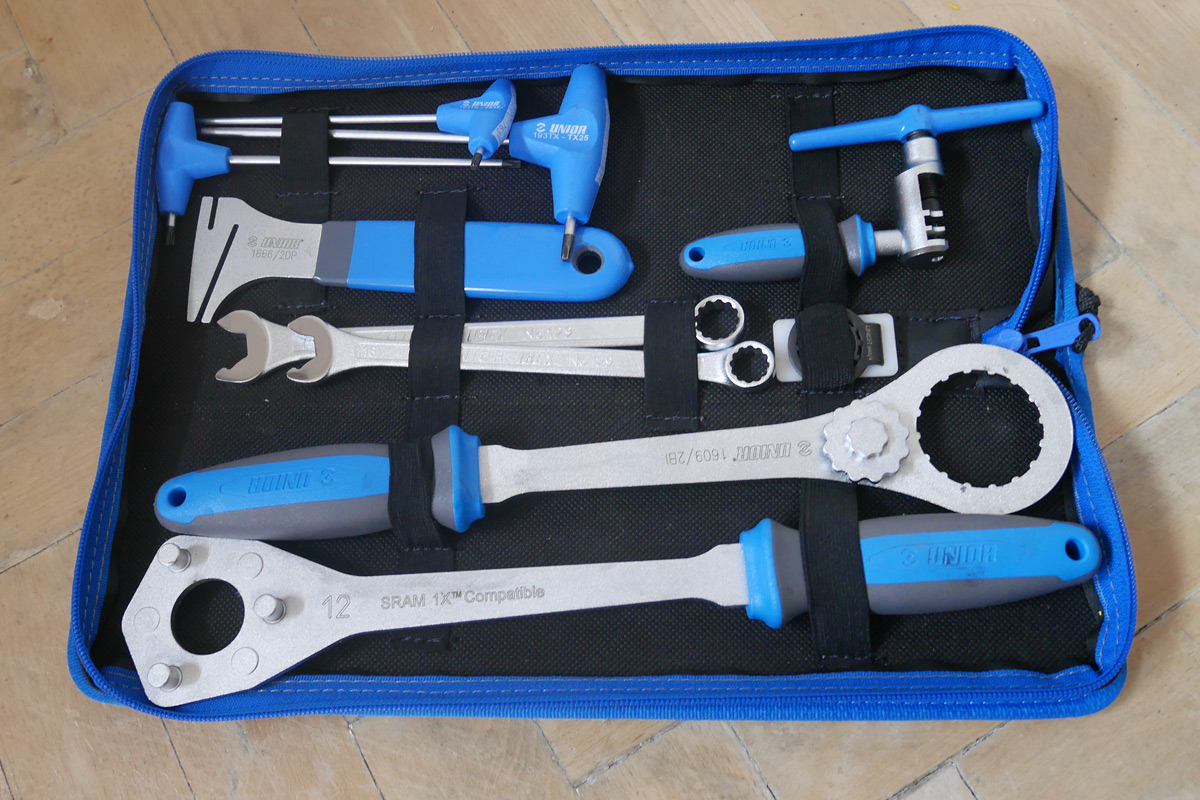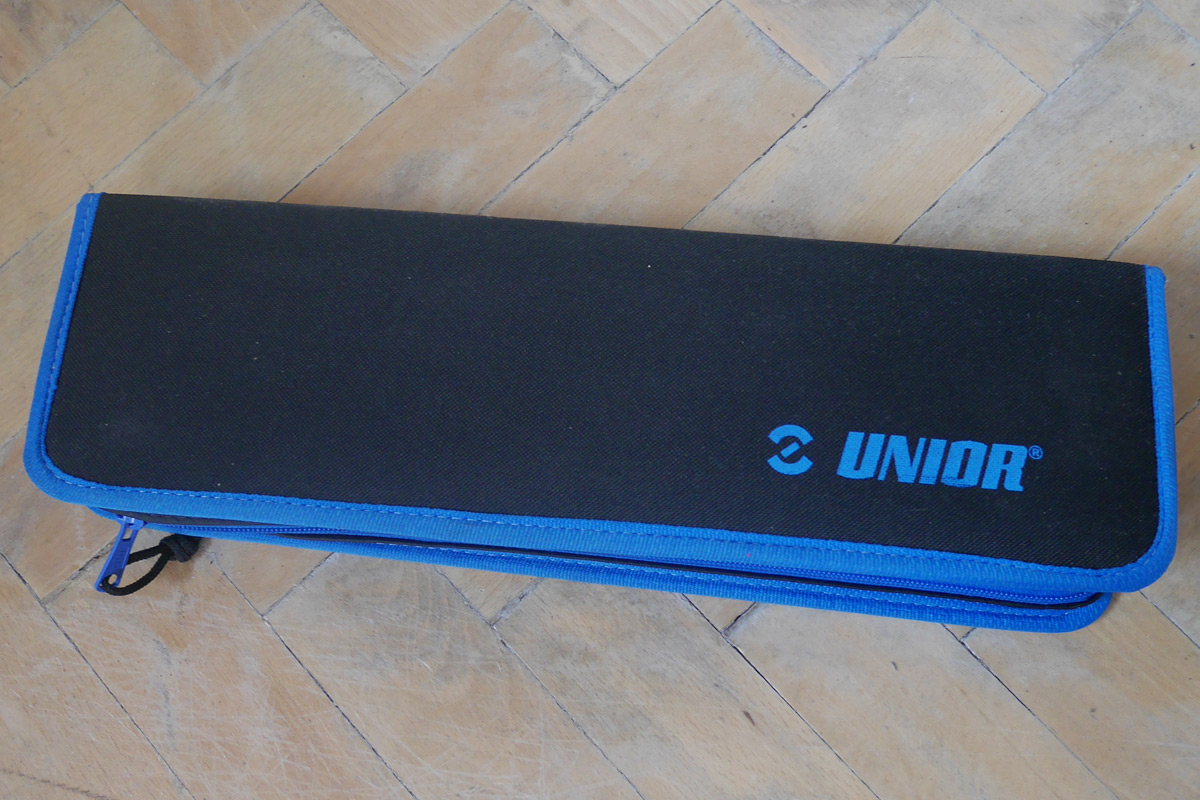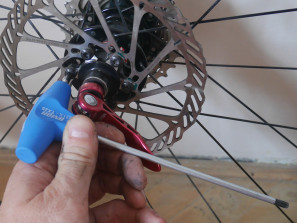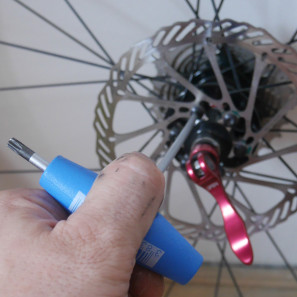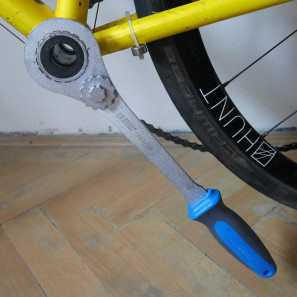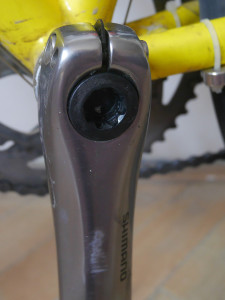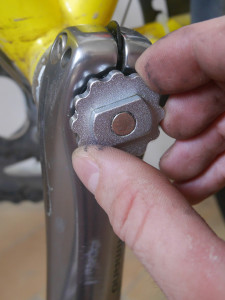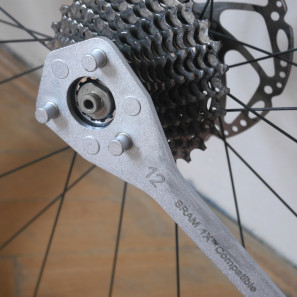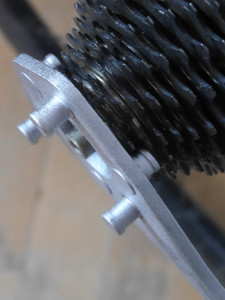Chatting with the team mechanics from the Unior Tools Team at the first XC World cup this season, we found some interesting looking and unique tools on their work bench, and wanted to know more. When we got to talking tools, we found that they were in the process of finalizing an agreement to distribute their European-made tool range in the US, so we thought we should give some of them a try and report back since most of our readers should have access to them by the end of the year. We chose to start off with some solid basics that would work well either in the hands of a full-time mechanic or someone like us who works on bikes out of their home shop. That includes Unior’s take on P-handle wrenches, a rotor truing tool, chain tool, some interesting combination wrenches, an external bottom bracket wrench, and a cassette tool.
Take a closer look at a few of these tools, as we’ve started to put them to use…
While it looks like we will have to wait until Eurobike to get the full details on their upcoming expanded distribution in the US, a selection of the tools are already available through CompetitiveCyclist.com. One of their obstacles has been their use of blue handles (they’ve had some blue tools in their line almost since the tool company’s start in 1919), which Park Tool has a trademark on for bike tools in the states. But they have taken that in stride, since they have other colors of tools as well. We’ve seen a few of the tools destined for the American market, and they will have black and red handles and branding.
Unior Tools are however readily available throughout Europe, and we’ve started to give them a whirl. Usually included as part of their multi-piece kits, Unior sent us this handy sized (12x5x39cm folded) toolbag to keep our hand tools in one place, and it seems it and a couple other sizes are also available individually if you need to get organized.
The first tools from Unior that we got some real use out of were these P-handled Torx wrenches (Unior calls them T-handles). The short arm was a nice length, long enough (55mm from the center on this T25, and 190mm overall) that we could get to rotor bolts without having to move a QR lever out of the way, and offered plenty of leverage. The plastic head has a nice tapered shape that fits in the palm and gets indentations on either side that makes it easy to grip and quickly spin between our thumb and fore finger. The tools are all size-specific, so when the bit gets smaller, the head gets smaller and the arms get shorter. We’ve only just started to use the tools, so we can’t attest to durability yet, but they are hardened and tempered, so should last. As for the tooling itself, the bits have as precise of a fit into torx bolts as we’ve felt from any tool maker. No noticeable play at all, which is good when we’re working with ti bolts on expensive bikes and components.
Unior’s external bottom bracket tool also has a nice feel. It fits tightly and has a nice 34cm long handle that flares out to clear chainstays. At the end you get a big soft handle that uses a hard plastic base (blue) with a rubber cover (black) for comfortable grip on all that leverage. We’re using it here on a Shimano bottom bracket, but it fits many other standard BBs. What’s especially nice about this tool, is that it includes a small detachable magnetic wrench for the Shimano plastic preload bolt on Hollowtech II cranks. So now you can spin that thing in and out by hand, or even use the 13mm wrench flats on it if the plastic bolts is stuck.
We showed you this cassette removal tool before, and now we’ve got a chance to use it. A much cleaner solution than a chain whip, the short pins on one side grab ahold of the 11 tooth of a cassette, while the longer pins can either grab the 12 of a 12+ cassette or reach over the 10 tooth cog on a SRAM 1X cassette to reach its second 12 tooth cog. For us it is much faster than a chain whip, although it does help to have a longer cassette lockring tool. Our short Park lockring tool still works, but you can only really get a wrench on the last 6mm of the wrench flats (because of the longer 12 tooth pins on one side.) It hasn’t caused us any big problem yet, but it is worth noting, even though I think the tool we were using is as short as they come.
There are also a couple of odd combination wrenches that Unior threw into our toolkit. While they aren’t really bike-specific, they are pretty cool. They use a unique IBEX profile that actually grips a nut only on the flats to both protect existing corners and to work on rounded bolts. They touch 3 sides of a nut at a time (instead of 2 with a typical open end wrench) and have a rewinding action that works almost like ratcheting because of their shape. We’ve yet to spend too much time with the other tools so far. The chain tool put one chain together quickly and effortlessly for me. We’ll update you once we’ve broken at least a dozen more to see how it wears. The rotor tool is pretty solid and fits nicely over all the rotors we have on hand, but we haven’t had time to get them all running perfectly true yet. Hopefully we’ll get everybody in line before cross season starts.
Unior produces all of their tools in their factories in Slovenia. They have some more specialized tools that we will be looking at in the future as we try to get more experience with the brand, their workmanship, and durability as a whole, so stay tuned for that. We’ll also talk with them about pricing across the EU and USA in a couple weeks, so we’ll come back here and add that in as well. Plus, from the talks we’ve had so far with the product manager who has his hand in pretty much every bike-specific tool they make, it looks like they will have a good deal of news for us at Eurobike in a couple of weeks.
